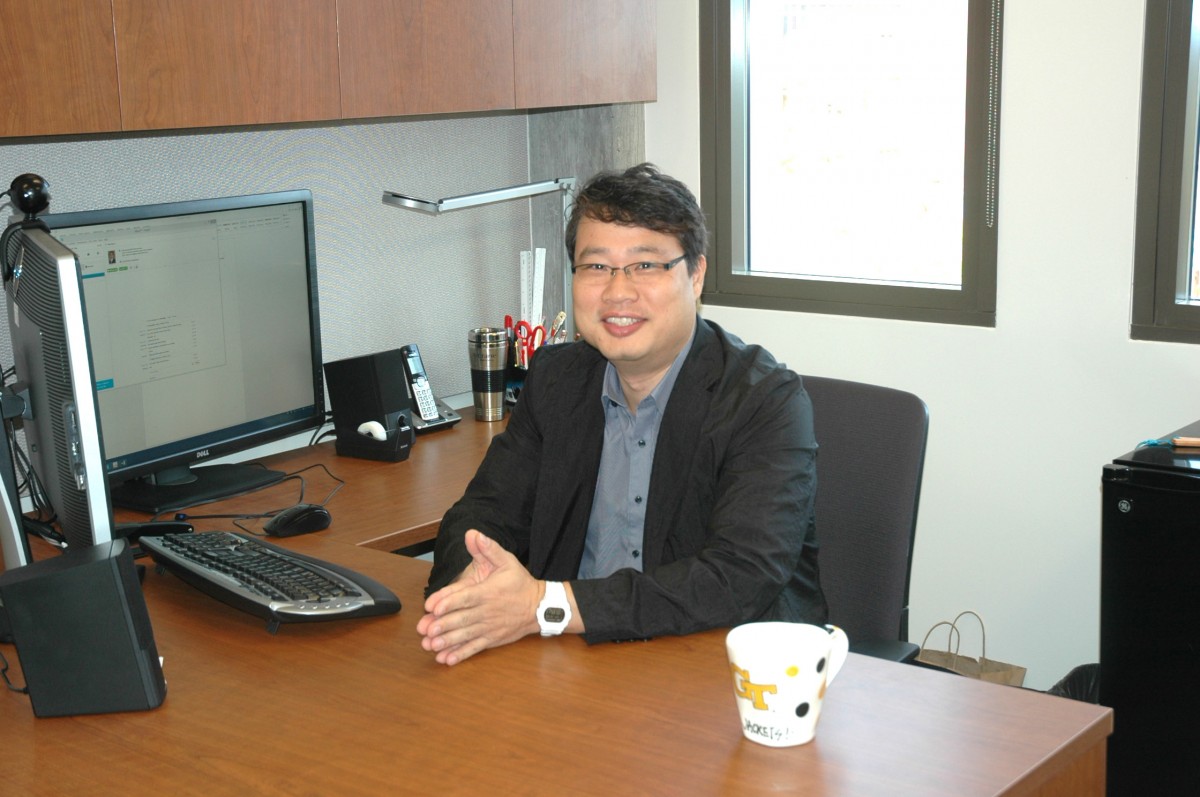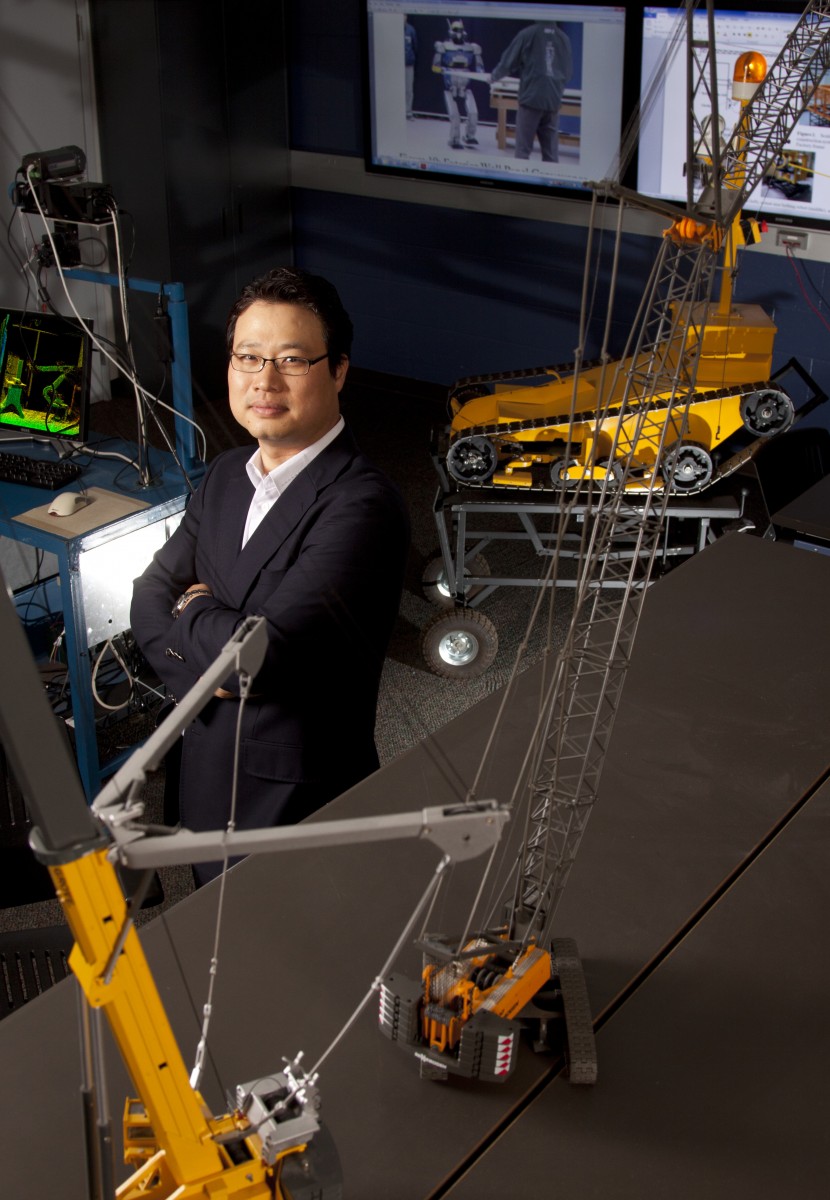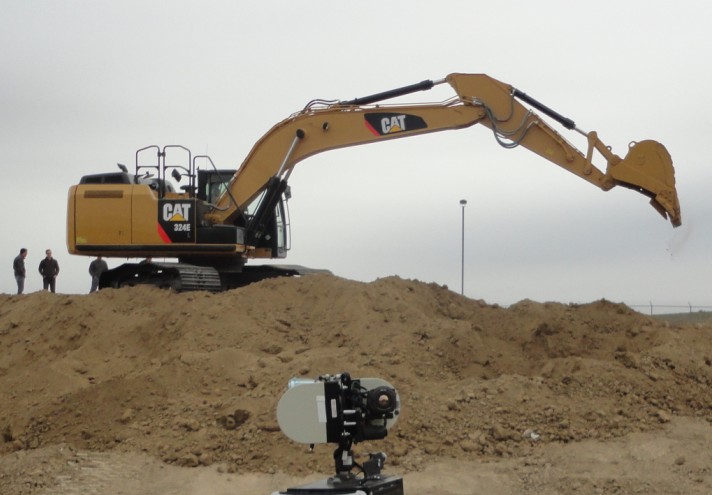
 There are a lot of reasons that Dr. Yong K. Cho is happy he joined CEE’s construction engineering faculty this fall. The Atlanta weather is nice. The schools his children now attend are good ones. And the Georgia Tech campus feels a little like home – he earned an MSCE here in 1997.
There are a lot of reasons that Dr. Yong K. Cho is happy he joined CEE’s construction engineering faculty this fall. The Atlanta weather is nice. The schools his children now attend are good ones. And the Georgia Tech campus feels a little like home – he earned an MSCE here in 1997.
“But the best thing about being back here, certainly, is the potential collaborations I can have at Georgia Tech,” he said. “The Institute’s reputation and its resources mean I will have many more research opportunities and access to great research partners.”
And a great lab.
 As the director of CEE’s Robotics & Intelligent Construction Automation Lab (RICAL), Cho will be well-equipped to explore his longtime research interests in construction automation, data acquisition system design, real-time monitoring of the built environment, building information modeling, sustainable energy, and roadway construction and maintenance. The lab will be equipped with a custom-built hybrid 3D LiDAR system, mobile robots, and an infrared camera, among other things.
As the director of CEE’s Robotics & Intelligent Construction Automation Lab (RICAL), Cho will be well-equipped to explore his longtime research interests in construction automation, data acquisition system design, real-time monitoring of the built environment, building information modeling, sustainable energy, and roadway construction and maintenance. The lab will be equipped with a custom-built hybrid 3D LiDAR system, mobile robots, and an infrared camera, among other things.
“I built two robots with my students [while teaching at the University of Nebraska] that I’m shipping out here,” he said. “And I will probably build some more here, but I am hoping I'll also be able to get some help from ME, or from ECE, too. I’m still talking to people about what we can work on together.”
Collaboration looms large for Cho, whose research has always combined his love of technology with his studies in construction engineering. At the intersection of these two interests are vast opportunities for innovation in many areas – from the creation of robotic systems that can detect potential energy loss in new construction to the development of a lightweight pneumatic device that routes out roadway cracks, and cleans them of debris before sealing them. Common to all of these projects, he said, is designing new technology that conforms to the specific task at hand.
 “I have seen a lot of technologies fail, not because they didn’t work in the lab, but because they didn’t work in the field,” he said.
“I have seen a lot of technologies fail, not because they didn’t work in the lab, but because they didn’t work in the field,” he said.
“Especially in construction engineering – you need to understand how things are done, the process of construction, how people work and how they work with technology. I understand construction engineering, and I can work with the technology to make it work in this environment.”
Once new equipment is designed Cho works closely with his colleagues in other fields - mechanical, architectural, and transportation engineering, to name a few. Each one adds different dimensions to his work - all derirved from problems they are tackling in their own research. Cho is thrilled that some of the best minds in each of those fields work alongside him now, at Georgia Tech.
But he’s hardly resting on their expertise.
“I prefer to design my own robotics automation systems from scratch because I can customize them to do what I want,” he said. “I know enough to be able to do a lot of the design and prototype work.”
At Georgia Tech, Cho plans to continue working on an NSF-funded project that aims to improve construction site safety and efficiency by using 3-D laser scanner and optical sensor technology to more accurately pinpoint and monitor the movement of large-scale equipment.
He writes:
“Automatic target detection and fitting and matching algorithms have been developed for rapid model-based graphical registration for various shapes of construction equipment and materials. Properly engineered, this new hybrid method for rapid 3D graphical recognition and registration of objects will become an important component for developing more intelligent and automated construction job sites by providing a fully sensed, monitored environment for materials, equipment, and operator.”
